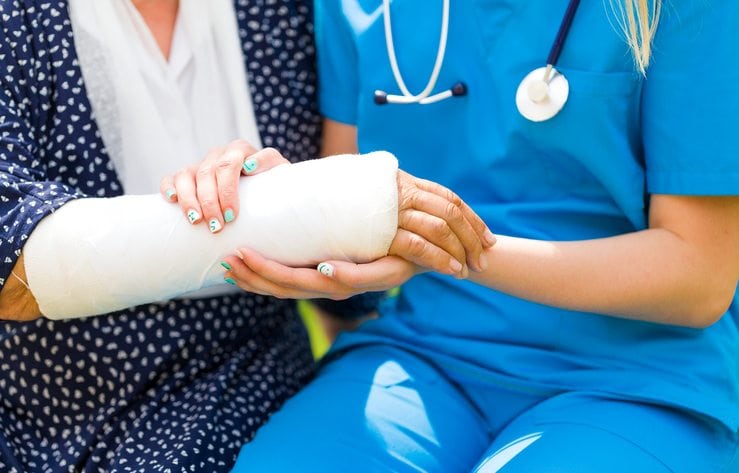If you are among the millions diagnosed with osteoporosis, or low bone density, you become more vulnerable to broken bones with even a fall or bump that previously would leave just a bruise. Such “osteoporotic fractures” are most common among those over 65 years old — and recovery can be challenging.
Dr. Stephen Davis, director of the fragility fracture program at the Hartford HealthCare Bone & Joint Institute at Hartford Hospital, explains why this is — and what his program does to help elderly patients recover from such a fracture.
Fragility fractures resulting from osteoporosis are a major public health issue. In particular, perimenopausal and postmenopausal women who develop a fragility fracture are then twice as likely to suffer subsequent fractures.
More patients (over 2 million) suffer these fractures each year than suffer from heart attacks, strokes and breast cancer combined. It’s estimated that as many as 50 percent of women and 25 percent of men will suffer a fragility fracture in their lifetime. Rates for fragility fractures are increasing worldwide, and mortality rates from hip fractures are significant at over 25 percent. We are doing as much as possible to address the fact that nationwide, as many as 80 percent of fragility fracture patients don’t get the right osteoporosis care.
Risk Factors for Fragility Fractures
- History/family history of osteoporosis.
- History of corticosteroid use (examples: for rheumatoid arthritis, lupus, kidney disease).
- History of cancer with chemotherapy or radiation treatment.
- History of heavy smoking.
- Small-framed Caucasian women.
- Small-framed Asian women.
The Q&A With Dr. Stephen Davis
Q. What is a fragility fracture?
A. That’s a fracture that occurs in somebody with abnormal bone. It’s basically a fracture that occurs when really a fracture shouldn’t occur like from falling from a standing height when really a broken bone should not happen all.
Q. What is the Fragility Fracture Program at the Bone & Joint Institute?
A. The goal is to make care of elderly patients with fragility fractures more streamlined and efficient to get patients to the operating room more quickly and then get them out of the hospital as soon as possible while decreasing complications.
Q. What can patients expect from the program?
A. Our goal is to get these patients out of the emergency department as quickly as possible and upstairs to a room. Then to get them to the operating room as quickly as possible so that we can get their surgery done and start their physical therapy. Hopefully, we can get them out of the hospital either to home or to a rehab facility while decreasing the number of complications.
Q. How do falls and fractures occur in patients with osteoporosis? How can they be prevented?
A. Sometimes these patients are just less strong and less coordinated and they fall more easily. We find that patients have a lot of tripping hazards around the home, and we try to educate people to avoid those tripping hazards. For example, loose rugs or wearing socks on hardwood floors. In wintertime, it’s also important to wear proper shoes so that you’re not slipping on the ice. Around the house, we want to make sure that any loose obstructions are identified and things like thresholds that may need to be repaired are taken care of.
Learn more about the fragility fracture program at the Hartford HealthCare Bone & Joint Institute at Hartford Hospital.

